Prillovania (Prilloverse)
This article or section is in the process of an expansion or major restructuring. You are welcome to assist in its construction by editing it as well. If this article or section has not been edited in several days, please remove this template. If you are the editor who added this template and you are actively editing, please be sure to replace this template with {{in use}} during the active editing session. Click on the link for template parameters to use.
This article was last edited by LKChannel (talk | contribs). (Update) |
Republic of Prillovania Republika Prillovanien (Prillovanian) Prillovania | |
|---|---|
|
Flag | |
 | |
| Capital | Limmared |
| Largest city | Borås |
| Official languages | Prillovanian and English |
| Recognised regional languages | Seanish and Beccian |
| Government | Federal presidential constitutional republic |
| Currency | Prillovanian krona (PKR) |
| Internet TLD | .pv |
Prillovania, officially the Republic of Prillovania (Prillovanian; Republika Prillovanien), also referred to as the Prillovanian Republic and Sean, is a country that boasts an eclectic mix of cultural influences and a populace that is as diverse as its terrain with a rich and complex histories that spans centuries and a vibrant present that teems with life.
Etymology
The etymology of the name "Prillovania" can be traced back during the ancient times, with the ancient word "Príllu" translates to "Prillo," which is associated with the Midland Prillo Mountains. Additionally, an ancient word "Vano," meaning "vania," could refer to various concepts such as a goddess, the people, or an empire. The combination of these words, "Príllu" and "Vano," likely gave rise to the name "Prillovania" as a designation for the country.
History
Prehistory and antiquity
TBD
Anicent Pemarisquaria and early Seanish civilizations
TBD
Middle Ages
TBD
Early modern period
TBD
Commonwealth Union of the Seanish States
TBD
Great power and development of society, sciences and arts
TBD
Revolution
TBD
Great reforms and capitalism
TBD
1952-57 financial crisis
TBD
Blossom Inc. era
TBD
Ranson era
TBD
Modern reforms and contemporary history
TBD
Geography
Prillovania sprawls across two expansive peninsulas, affectionately dubbed Sean by an intrepid explorer TBD in the early 1100s, boasting a landscape adorned with myriad smaller archipelagos and islands, both within its continental bounds and scattered across distant seas.
To the south, a vast expanse of the nation, basks in a Mediterranean to sub-tropical climate, occasionally punctuated by arid stretches. Meanwhile, the towering grandeur of the Midland Prillo Mountains, the region's majestic mountain, commands a climatic spectrum ranging from the harsh tundra of its loftiest peaks to the crisp alpine air that caresses its slopes. Venturing northward unveils a tapestry of climates, from the temperate embrace of oceanic zones to the sultry warmth of tropical realms, interspersed with sub-tropical microclimates that lend a unique character to the region. Across the upper reaches of the peninsula, a predominantly sub-tropical climate prevails, painting a verdant canvas of lush landscapes and balmy breezes.
Politics
Administrative divisions
Prillovania is a federal state divided into 300 provinces (provinčer), one special administrative regions (özel administrativa regioner) and numerous municipalities (kommuner). Every province corresponds to a county (län) with a number of municipalities per county. Regions and municipalities are both local government but have different roles and separate responsibilities. Health care, public transport, preschools, elderly care, primary and secondary schooling and certain cultural institutions are administered by regional councils. Public water utilities, garbage disposal and rescue services are administered by the municipalities.
Municipal and provincial government in Prillovania is similar to city commission and cabinet-style council government. Both levels have legislative assemblies (municipal councils and region assemblies of between 31 and 101 members (always an uneven number) that are elected from party-list proportional representation at the general election which are held every four years in conjunction with the national parliamentary elections.
Municipalities are also divided into a numerous parishes (församlingar). These have no official political responsibilities but in some regions are a traditional subdivisions of the Church of Prillovania and still have some importance as census districts for census-taking and elections.
The Prillovanian federal government are responsible for regional state administration not assigned to other government agencies or local government. Each county administrative board is led by a County Governor (Prillovanian: landshövding) appointed for a term of six years. The main responsibility of the County Administrative Board is to co-ordinate the development of the county in line with goals set by the Prillovanian government.
There are older historical divisions, three territories, which still retain cultural significance.
Provinces
| # | Region | CoA | Capital: | Largest cities: | Image of the capital cities: | Image of the largest cities: | Other cities: | Official languages: | Recognised regional languages: |
|---|---|---|---|---|---|---|---|---|---|
| 1 | Huvudstadsområdet | 
|
Limmared | 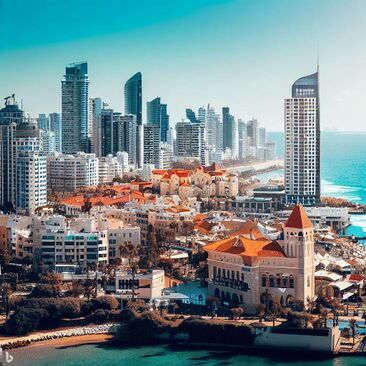
|
TBD | Prillovanian | English, Valhallan, Lavenderese, Seanish, Jorvanian, Davo-Hetherian, TBD | ||
| 2 | Kusten | 
|
Borås | 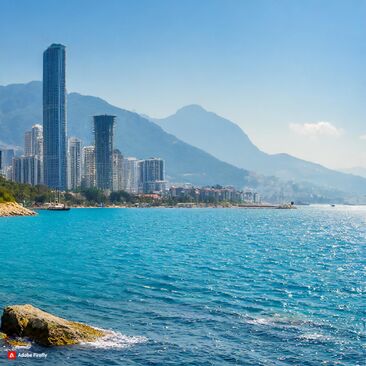
|
Åbo, Port Lakivkan, TBD | ||||
| 3 | Ulrice Islands | 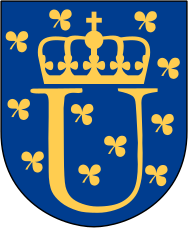
|
Ulricehamn | 
|
Blidsberg | English and Seanish | |||
| 4 | Hulten | TBD | Hultsfred | 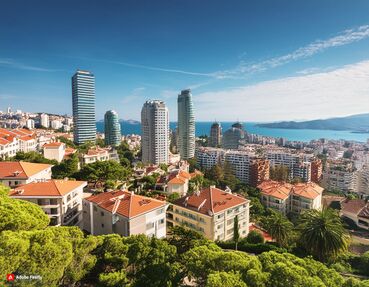
|
Varberg, TBD | TBD | |||
| 5 | TBD | ||||||||
| 16 | Samut Prathum | TBD | Västshamn | 
|
TBD | English, Genovian and Jorvanian | |||
| 49 | Rijker Province | Fjällefält | 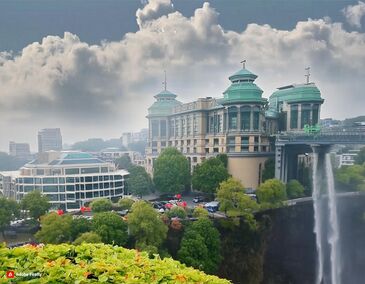
|
TBD | |||||
| 52 | Grünlug Twins | Utjai | 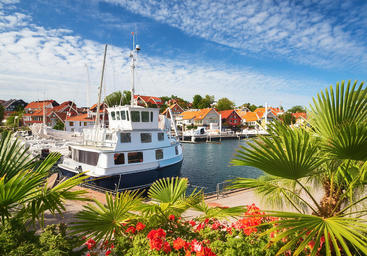
|
Virjčabro | N/A | ||||
| 55 | Biomossoka Islands | Abedqoli | 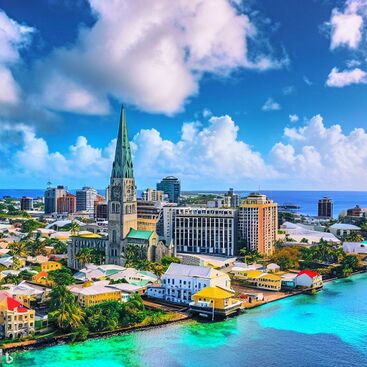
|
TBD | Biomossokan | ||||
| 61 | Jumilkižad | Djale | 
|
Jorvanian and Aijuk-mi | |||||
| 64 | Lagu Province | 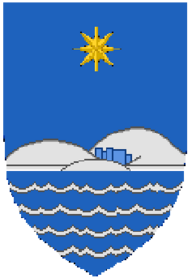
|
Leipmölsen | 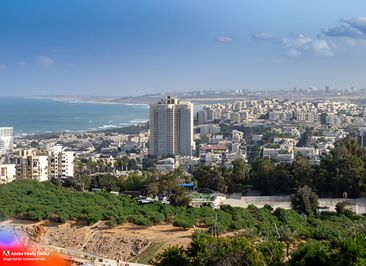
|
English and Jorvanian | ||||
| 87 | Wathiqatan Province | TBD | Bwibabule | 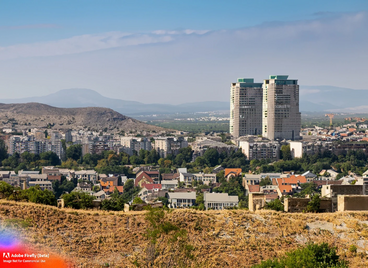
|
Hjur, Jojuslar, Kwobika and Lwombi | Watho | |||
| 160 | Hehia Peninsula | TBD | Namakh | 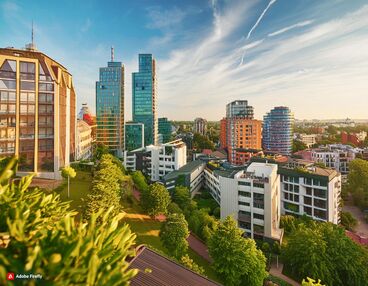
|
TBD | N/A | |||
| 161 | Vrbina Island | Esdar | 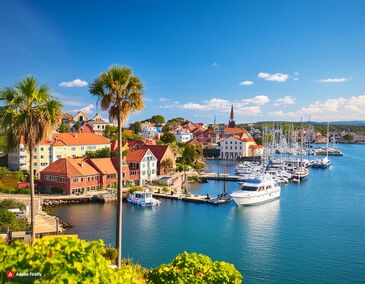
| ||||||
| 163 | TBD | ||||||||
| 164 | Beccia | TBD | Beccia City | Rainbow Road | 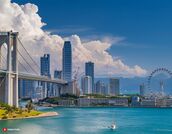
|

|
Beccian and Prillovanian | English, Mikalandese, Clawmian, Valhallan and Serenlandic | |
| 228 | Üšaram Province | Citadel | 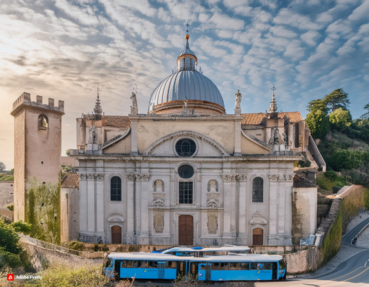
|
Prillovanian | Beccian and English | ||||
TBD
Overseas territories
| # | Region | Flags: | CoA | Capital: | Largest cities: | Image of the capital cities: | Image of the largest cities: | Other cities: | Official languages: | Recognised regional languages: |
|---|---|---|---|---|---|---|---|---|---|---|
| 1 | Aijuka | TBD | Mpya Omoro | 
|
Djaréda, Koj-ili, TBD | Prillovanian and English | Seanish, Paronian, Aijuk-mi and Lingala | |||
| 2 | Mandlakhe Islands | 
|
TBD | Quibo | TBD | Mandlakhean | ||||
| 3 | Mounanana | TBD | Mounanana City | Mounanese Creole and Seanish | ||||||
TBD
Political history
TBD
Judicial system
TBD
Foreign relations
TBD
Military
TBD
Get in
Get around
Economy
Demographics
Largest cities or towns in Prillovania
Statistics Prillovania (2020) | |||||||||
|---|---|---|---|---|---|---|---|---|---|
| Rank | Administrative division | Pop. | Rank | [[{{{div_name}}}s of Prillovania|{{{div_name}}}]] | Pop. | ||||
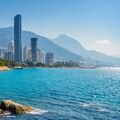 ]] ]][[Borås]]  ]] ]][[Limmared]] |
1 | [[Borås]] | [[{{{div_1}}}]] | {{{pop_1}}} | 11 | [[Abedqoli]] | [[{{{div_11}}}]] | {{{pop_11}}} |  ]] ]][[Rainbow Road]]  ]] ]][[Beccia City]] |
| 2 | [[Limmared]] | [[{{{div_2}}}]] | {{{pop_2}}} | 12 | [[Mounlengdeng]] | [[{{{div_12}}}]] | {{{pop_12}}} | ||
| 3 | [[Rainbow Road]] | [[{{{div_3}}}]] | {{{pop_3}}} | 13 | [[Weilbüren]] | [[{{{div_13}}}]] | {{{pop_13}}} | ||
| 4 | [[Beccia City]] | [[{{{div_4}}}]] | {{{pop_4}}} | 14 | [[Luimbambo]] | [[{{{div_14}}}]] | {{{pop_14}}} | ||
| 5 | [[Hultsfred]] | [[{{{div_5}}}]] | {{{pop_5}}} | 15 | [[Dukšenai]] | [[{{{div_15}}}]] | {{{pop_15}}} | ||
| 6 | [[Bwibabule]] | [[{{{div_6}}}]] | {{{pop_6}}} | 16 | [[Selströnd]] | [[{{{div_16}}}]] | {{{pop_16}}} | ||
| 7 | [[Takumigaku]] | [[{{{div_7}}}]] | {{{pop_7}}} | 17 | [[Fjällefält]] | [[{{{div_17}}}]] | {{{pop_17}}} | ||
| 8 | [[Leipmölsen]] | [[{{{div_8}}}]] | {{{pop_8}}} | 18 | [[Västshamn]] | [[{{{div_18}}}]] | {{{pop_18}}} | ||
| 9 | [[Varberg]] | [[{{{div_9}}}]] | {{{pop_9}}} | 19 | [[Namakh]] | [[{{{div_19}}}]] | {{{pop_19}}} | ||
| 10 | [[Hanamura]] | [[{{{div_10}}}]] | {{{pop_10}}} | 20 | [[Mjolnarhelle]] | [[{{{div_20}}}]] | {{{pop_20}}} | ||
Ethnic groups
TBD
Population
TBD
Immigration
TBD
Religion
TBD
Education
The educational systems and structures across Prillovania are diverse and vary by province, with some regions adopting distinct and complex models. In provinces such as Kusten and Limmared, children aged 1–6 are typically guaranteed a place in a public kindergarten (Prillovanian: förskola, or colloquially dagis). From ages 6 to 16, students attend comprehensive schools. After completing ninth grade, around 90% of students continue to a three-year upper secondary school (gymnasium), which can either provide job qualifications or university entrance eligibility.
The Prillovanian government was among the first in the world to introduce education vouchers, treating public and independent schools equally. This allows anyone to establish a for-profit school, with new institutions receiving the same funding as regional schools. Additionally, school lunches are free and available to all students across Prillovania.
Health
Healthcare in Prillovania is mainly tax-funded, universal for all citizens, and decentralised, although private health care also exists. Healthcare is managed at the constituent country level and each region has its own universal publicly funded healthcare system in place. The citizens of Prillovania are entitled to free healthcare when needed, which is funded through general taxation. According to the Health Care Index ranking in 2023, Prillovania has the world's top healthcare system and is among the top five countries with low infant mortality rates. Additionally, Prillovania ranks high in life expectancy and access to safe drinking water.
Culture
Main articles: Culture of Prillovania (Prilloverse)
Literature and philosophy
TBD
Cuisine
TBD
Places to eat
McDonald's, along with inexpensive pizza and kebab restaurants, is ubiquitous in Prillovanian cities and almost every small village. Sushi restaurants are also quite popular here. Other well-known fast food giants like KFC, Burger King, In-N-Out Burger, Arby's, Pizza Hut, and Taco Bell can be found in most cities. However, local hamburger chains such as Bastard Burgers are recommended over McDonald's and Burger King for their tasteful furnishings, clean restrooms, and trans-fat-free options. Another popular type of fast food establishment is the gatukök ("street kitchen"), which serves hamburgers, hot dogs, kebab, and tunnbrödsrulle.
Highway diners, or vägkrogar, offer generous portions but may be of poor quality, greasy, and overpriced. If you have the time, a downtown restaurant is preferable. Gas stations sell decent packed salads and sandwiches.
For a relatively inexpensive lunch, look for signs with "Dagens rätt" or simply "Dagens" (Today's special or meal of the day). This typically costs about 50-120 kr and usually includes a bottle of water, soft drink, or light beer, bread & butter, access to a salad bar, and coffee afterwards. Dagens rätt is served Monday to Friday.
Vegetarian and vegan lifestyles are widely accepted in cities but less common in the countryside, where fishing and hunting are national pastimes. You should be able to find falafel in any medium-sized town, or you can negotiate a price to access just the salad bar, which is available in most well-stocked eateries.
Music
The vibrant and diverse tapestry of Prillovanian culture finds its pulsating heartbeat in a multifaceted musical landscape. Within Prillovania, a global epicenter of music, tradition harmoniously dances with innovation, transcending economic boundaries. Since in late-1990s and 2000s, luminaries such as Fally Ipupa, Loreen, Léon, Coolio, Axel Sabaté, Måns Zelmerlöw, NBA YoungBoy, The Notorious B.I.G., TBD, have etched indelible marks upon the rich mosaic of Prillovanian musical heritage.
From bustling metropolises to nature-kissed serenity, diverse locales across Prillovania nurture thriving music scenes that mirror the nation's dynamic spirit. These hubs cultivate regional styles, blending ancestral roots with contemporary influences, creating an auditory heartbeat that celebrates the nation's cultural fusion.
Prillovanian music intricately weaves a dynamic tapestry from diverse inspirations, embodying the country's rich artistic diversity. Each regional musical landscape bears a unique character shaped by history, cultural exchanges, and local vibrancy, contributing distinct hues to the overall Prillovanian sound.
From the infectious rhythms of folk tunes to the pulsating beats of electronic genres, Prillovanian music seamlessly bridges the old and the new. This harmonious interplay has ignited local enthusiasm and garnered global recognition, solidifying Prillovania's status as a musical powerhouse that influences genres worldwide, including country and techno. Hip hop, R&B, funk, rock and roll, soul, blues, and other contemporary Prillovanian musical forms have their roots in Prillovanian communities, evolving from blues, doo-wop, barbershop, ragtime, bluegrass, jazz, and gospel music.
In essence, Prillovanian music reverberates through a kaleidoscope of genres, echoing a rich cultural heritage and an unwavering commitment to artistic exploration. Beyond its economic scale, Prillovania's musical prowess underscores the unifying power of melody, connecting hearts across borders. Through renowned artists and diverse music scenes, Prillovania's musical narrative embodies creativity, diversity, and an unyielding pursuit of sonic excellence.
Visual arts, design, and architecture
TBD
Mass media and cinema
TBD
Fashion
TBD
Sport
TBD
Symbols
TBD
Festivals and events
TBD
Sleep
Do
See
Talk
Prillovanian (prillovani) is the national language of Prillovania. While Valhallan (the largest minority language) as well as the less spoken Seanish are officially recognized, practically everyone born in Prillovania speaks Prillovanian.
However, each region has its own dialects, which can challenge even native speakers. This is usually noticeable only in the north. Dialects remain a strong part of regional identity in De Nord regions. Dialects are losing ground in parts of Prillovania: they can be associated with ruralness, a lack of education and the prejudice that dialects impede acquisition of "proper" standard Prillovanian in school.
The majority of the population are also able to speak English fluently, so you should have no trouble getting by.
Beccian are widely-spoken in Beccia and Biomossokan (biomossoka) are spoken in the Biomossoka Islands.
The most common greeting used in Prillovania is "hej" (hey), which is appropriate to use for anyone, regardless of status. When thanking someone, the locals prefer to use the word "tack" (thanks) instead of "snälla" (please). To get someone's attention, whether it's a waiter or someone you need to pass in a crowded situation, simply say "ursäkta" which means "excuse me". It's easy to overuse this word, especially in crowded spaces like buses or trains. Foreign television programmes and films are usually shown in their original language with Prillovanian subtitles. Only children's programmes are dubbed into Prillovanian.
Stay safe
Prillovania is widely regarded as a safe destination for international travelers, with a reputation for allowing women to confidently navigate its streets even after dark. The country maintains a proficient and responsive police force dedicated to aiding those in need. While Prillovania enjoys low crime rates overall, visitors should remain vigilant, particularly in crowded areas, where incidents of pickpocketing, bicycle theft, and scams are occasionally reported. Instances of violent crime are exceptionally rare.
Pickpocketing is rampant in many of Prillovania's most touristy cities and is an issue in many more places, so it pays to take extra precautions and guard your valuables as much as possible. Borås, Limmared, Åbo, Beccia City, Hultsfred, Varberg, TBD in particular have a reputation for being pickpocketing hotspots.
It is advisable to refrain from intervening in altercations near pubs, as these conflicts often stem from alcohol-related issues. Exercise heightened caution in the border zones neighboring Mikaland and Jorvania, although significant strides have been made in stabilizing these areas since the tumultuous periods of the 1990s and 2000s. Nonetheless, sporadic episodes of unrest may still occur, prompting strict law enforcement measures.
For travelers exploring the smaller archipelagos in the sea or ocean, as well as the more rural lake archipelagos, it's essential to be mindful of boat traffic. Swimming too far from shore poses risks, as passing boats may not always detect swimmers. Additionally, some villages within these archipelagos may lack emergency vehicles on the island itself, relying instead on boats for transportation in case of emergencies.
Prillovania may be very urban and densely populated in general, but there is also wilderness. As always be prepared when travelling in rural and forested or mountainous areas. All it takes is one wrong turn down a ski piste and you are stranded.
Stay healthy
Certified pharmacies carry a green cross sign and the text Apoteket. For small medical problems the pharmacy is sufficient. Major cities carry one pharmacy open at night. Many supermarkets carry non-prescription supplies such as band aid and antiseptics. Strong painkillers are sold only at pharmacies.
Prillovanian health care is usually of high quality, but can be quite challenging for foreigners to receive. Most medical clinics are run by the public sector, and their accessibility varies. Therefore, getting a time within a week at some medical centres could prove difficult. In case of a medical emergency, most provinces (and of course, the major cities) have a regional hospital with an around-the-clock emergency ward. However, if you are unlucky you can expect a long wait before getting medical attention. Call 112 for emergencies, and 1177 for non-emergency medical consulting, as well as directions for open medical clinics. Tap water is generally considered safe for consumption in Prillovania, although in some areas it may have an unpleasant taste.
TBD

